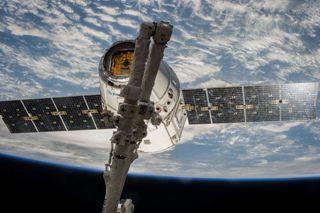
Dragon capsule. Photo: SpaceX
WASHINGTON (PTI): NASA has developed high-tech cages to carry rodents from Earth to the International Space Station (ISS) to allow researchers to study the long-term effects of microgravity on mammalian physiology.
The Rodent Habitat modules will first fly in August aboard an unmanned SpaceX Dragon cargo ship.
Developed at NASA's Ames Research Centre in Moffett Field, California, the new habitats are designed for transporting the animals to the space station and as part of their long-term accommodation.
They consist of a transport module, which fits inside the racks in the pressurised cargo section of the Dragon spacecraft, and an access module for moving the rodents from the transporter to the station's rodent habitat without having the mice escape and take up residence behind the control panels.
Each habitat module provides as many as 10 mice or six rats with all of the basics they need to live comfortably aboard the station including water, food, lighting and fresh air.
Rodents easily can move around the living space by grasping grids that line the floor and walls. The modules include data downlink capability that enables monitoring of environmental conditions such as temperature.
A visible light and infrared video system allows the crew in space and scientists and veterinarians on the ground to monitor behaviour and overall health of the rodents on a daily basis.
Based on recommendations of the National Research Council in US, the new modules are part of a study of the effects of prolonged weightlessness, such as would be encountered on a mission to Mars, 'Gizmag' reported.
Since rodents develop and age much faster than humans, studying rodent model organisms accelerates the understanding of diseases that may take years or decades to develop in humans.
Rodents may be studied in space during different developmental stages of life. Additionally, spaceflight rodent studies are important for developing countermeasures - procedures, drugs or devices - to protect health during spaceflight.
"Studies that use different genetic strains of rodents will help researchers pinpoint the roles played by specific genes in gravity sensing and responses," said Ruth Globus, Rodent Research Project scientist and researcher in the Space Biosciences Division at Ames.
 Previous Article
Previous Article Next Article
Next Article












The Indian Air Force, in its flight trials evaluation report submitted before the Defence Ministry l..
view articleAn insight into the Medium Multi-Role Combat Aircraft competition...
view articleSky enthusiasts can now spot the International Space Station (ISS) commanded by Indian-American astr..
view article